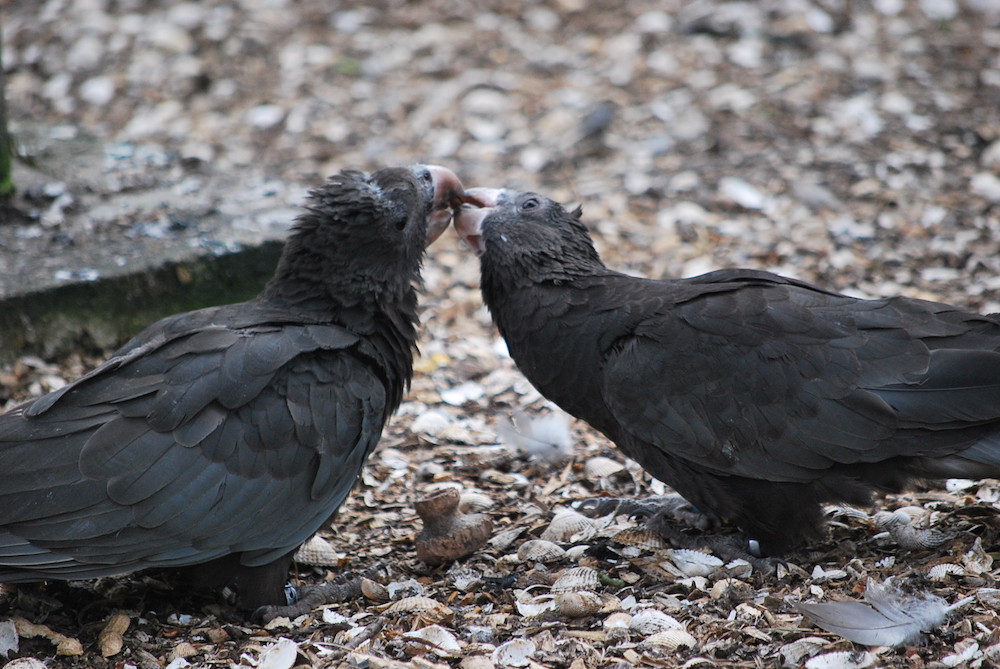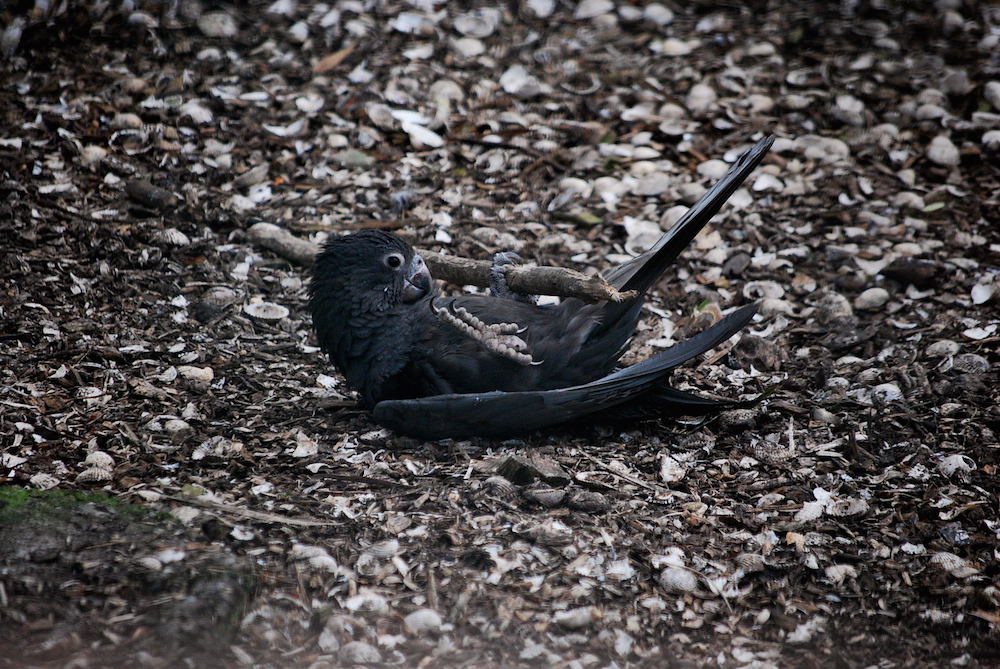Got Calcium? Wild Parrots Use Tools During Snack Time

The black-feathered greater vasa parrot has a new skill to add to its resume — the use of tools to grind shells to create calcium powder, which it then proceeds to lick up with its pink tongue, a new study finds.
The vasa parrot is now the only known species besides humans to use tools for grinding, the researchers said.
The finding was an "entirely fortuitous discovery," said study lead author Megan Lambert, a doctoral student of psychology at the University of York. She and her colleagues were observing 10 captive greater vasa parrots (Coracopsis vasa) in aviaries that had floors covered with cockleshells, soil, wood chips and pebbles, she said. [Pretty Bird: Images of a Clever Parrot]
"[We] noticed they were interacting quite a bit with objects from the floor of their aviary," Lambert told Live Science. "So we took a closer look and that’s when we found they were actually using tools."
The parrots were picking up pebbles or date pits with their beaks and grinding the tools against the cockleshells to create a fine calcium powder. (Seashells are mostly made of calcium carbonate.) The birds then licked the powder off the tools, which gave them a nutritious calcium snack, Lambert said.
Sometimes the parrots used the pebbles or pits as a wedge to help them break the seashells into small pieces that were easier to eat and digest, she added.
"What's also particularly interesting is that we observed a lot of tool transfer, where one bird would actually approach group members and steal the tool directly from their beak, and then go on to use it on a shell," she said.
Get the world’s most fascinating discoveries delivered straight to your inbox.
All 10 birds interacted with the shells, but only half used tools. The others used their beaks to break apart the shells for ingestion, she said. [Video: Watch the Parrots Use Tools to Get Calcium]
"Unlike mammals, birds cannot efficiently store calcium in the skeleton, and so may still require an extra boost during the breeding season to assist with the formation of their eggshells, which are made almost entirely of calcium," Lambert said.
However, more research is needed to determine whether this tool-grinding quirk is related to breeding, or whether it happens during other times of the year, she added.
The greater vasa parrots, which are natives of Madagascar, already have a reputation for being clever. They often play with objects while in captivity, and they can thread twigs into the open links of a chain, the researchers wrote in the study.
There are more than 300 parrot species, but only a minority are known to use tools. These include hyacinth macaws (Anodorhynchus hyacinthinus), which use leaves and small sticks as wedges to open nuts, and black palm cockatoos (Probosciger aterrimus), which use rocks and empty nutshells to drum on trees during social displays, the researchers said.
Watching the parrots use tools will "ultimately help us to better understand the distribution of this behavior in the animal kingdom, so we can try to get a clearer picture of why certain species, including humans, use tools," Lambert said.
The study was published online Wednesday (Dec. 16) in the journal Biology Letters.
Follow Laura Geggel on Twitter @LauraGeggel. Follow Live Science @livescience, Facebook & Google+. Original article on Live Science.

Laura is the managing editor at Live Science. She also runs the archaeology section and the Life's Little Mysteries series. Her work has appeared in The New York Times, Scholastic, Popular Science and Spectrum, a site on autism research. She has won multiple awards from the Society of Professional Journalists and the Washington Newspaper Publishers Association for her reporting at a weekly newspaper near Seattle. Laura holds a bachelor's degree in English literature and psychology from Washington University in St. Louis and a master's degree in science writing from NYU.



